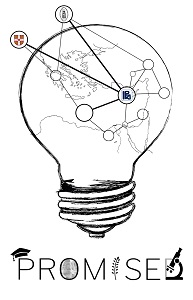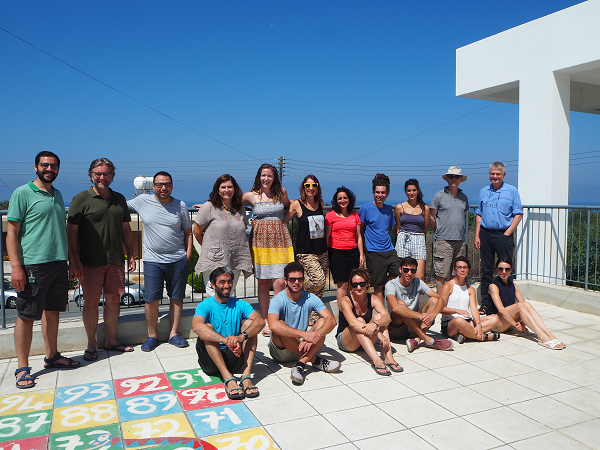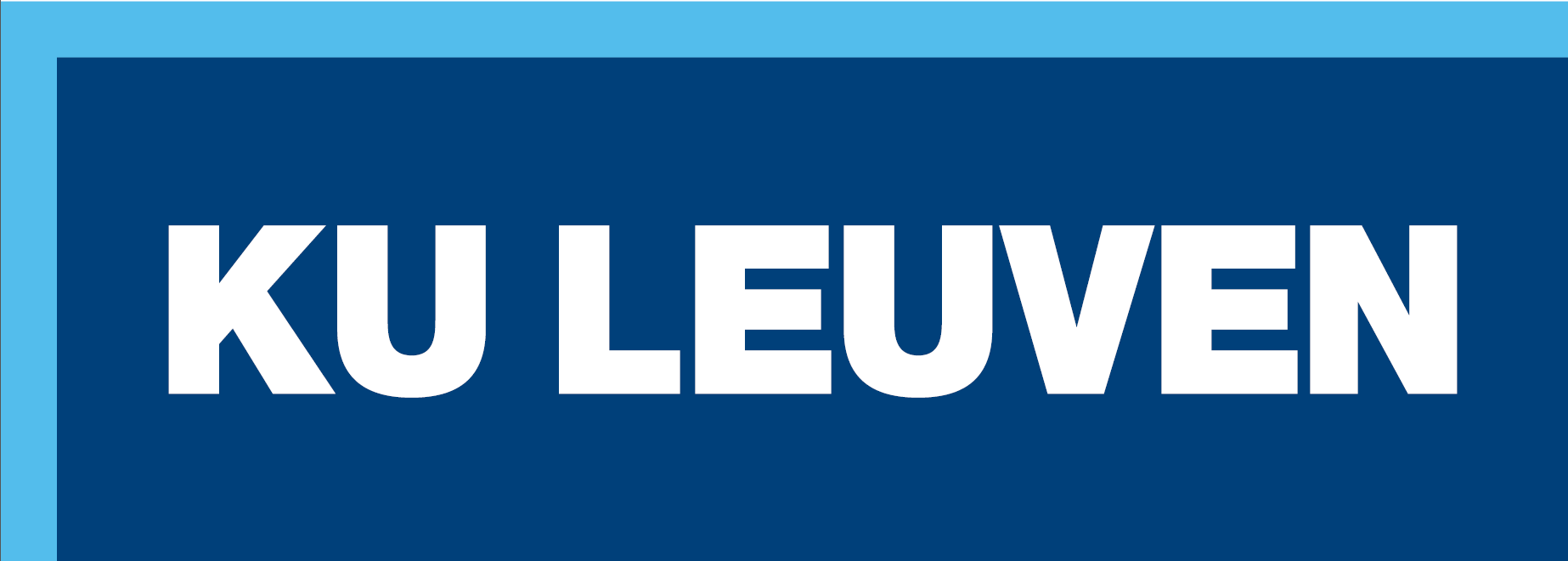Ancient Landscapes: Raw Materials and Natural Resources
26th -31st July 2021
Cyprus
 |
 |
Applications are now open!
The Science and Technology in Archaeology and Culture Research Centre (STARC) of The Cyprus Institute, and the Universities of Cyprus, Cambridge and Leuven are delighted to announce that the 2021 Cyprus Institute Summer School "Ancient Landscapes: Raw Materials and Natural Resources" will be held from 26 to 31 July 2021.
The summer school is organised around an intensive series of daily lectures from leading archaeological scientists from STARC and the Universities of Cyprus, Cambridge and Leuven.
Additionally to the lectures, field trips and visits to UNESCO World Heritage sites will be offered.
The first two days of the summer school will take place at the STARC Laboratories at the CyI campus in Nicosia, followed by four days at the village of Pedoulas in the Troodos mountain ; local transport and shared-room accommodation will be provided.
Of course, all protection protocols against COVID-19 will be followed throughout, and we will inform you before the start of the Summer School about specific measures that will be in effect. You can also stay informed by following the Cypriot Government’s relevant website.
Please see the proposed programme below.
Places are limited to ensure a good ratio of students to lecturers and applicants should be enrolled at a Master's level programme or above.
Cost: The cost for the summer school is €600, including local transport in Cyprus, all meals and shared (2 people per room) accommodation. Flights are not included. A non-refundable 33% deposit (€200) is required within two weeks of being offered a place in order to secure your place. In case of COVID related travel restrictions announced after the registration, any deposit paid will be returned to the participants.
Limited scholarships/stipends are available upon request, particularly for applicants from low and middle-income countries and those with a demonstrable involvement in archaeological science in the Eastern Mediterranean and the Middle East. Applications should include a brief motivation letter, a CV and the name of a potential referee, such as an academic advisor.
The application deadline is the 25th of June 2021. Places are limited and will be given on a first-come, first-served basis. To apply for a place and for any further details, please contact Y. Trimithiotis at This email address is being protected from spambots. You need JavaScript enabled to view it..
The Summer School is organised as part of the activities of the Horizon 2020 project “PROMISED: Promoting Archaeological Science in the Eastern Mediterranean’(Grant No 811068)’ .
Please visit the PROMISED project website for further information and a report on the 2019 summer school, "From Natural Resources to Material Culture: Transdisciplinary Approaches in Archaeological Science".
2021 summer school programme
Ancient Landscapes: Raw Materials and Natural Resources
| Monday 26th |
• Welcome and Introduction |
Promised Team |
|
• Archaeometry of Glass: reflecting on Iron Age glass technology |
A. Oikonomou | |
|
• 1st millennium CE Glass Industries - an overview |
Th. Rehren | |
| Tuesday 27th | • Geochemical prospecting in archaeology | P. Degryse |
| • Isotope geochemistry in archaeological science | ||
| Wednesday 28th | • An integrated approach to the study of archaeological ceramics: From sampling design to archaeological inference | M. Dikomitou Eliadou |
| • Field Trip- Pottery making demonstration | Promised Team | |
| Thursday 29th | • Archaeological and historical applications of dendrochronology to cultural heritage and palaeoclimate in Cyprus and the East Mediterranean: an introduction | S. Manning and N. Bakirtzis |
| • Bronze Age Economic and Natural Landscapes: the case of Crete and Cyprus | Evi Margaritis | |
| Friday 30th | • Archaeometallurgy: questions, methods and case studies | M. Martinón-Torres |
| • Revealing the long history of copper production in Cyprus – fieldwork/lab work/archival research | L. Kassianidou | |
| Saturday 31st | • Field Trip-Skouriotissa site, Troodos Geopark Visitors Centre | M. Martinón-Torres, L. Kassianidou |
Archaeometry of Glass: Reflecting on Iron Age Glass Technology
Artemios Oikonomou, STARC
Arguably, glass is an artificial material that needed the greatest amount of technical know-how to produce it of any other inorganic ancient material in antiquity. Mixing of specific ingredients/raw materials and very sophisticated control of pyrotechnology produces a material having unique properties, such as opacity, translucency and transparency, while it can be coloured with bright hues and can reflect/refract the light. In the very beginning of its invention glass has been attributed a ritual significance, but through time and innovation, slowly developed a more functional character.
In this lecture, we will examine a range of factors that led glass to its first appearance followed by the various ways in which it was used in society, ranging from important high value roles to begin with, leading to every-day functions following the invention of glass blowing at the ending of 1st millennium BC. We will consider the ritual, social, economic and political contexts in which glass developed and became the highly valued material with many uses until today. Furthermore, we will investigate the range of raw materials used in this period and their natural sources throughout the Mediterranean region. Finally, by looking at a range of archaeological case studies we will investigate how glass was made, how it can be characterised, what meaning glass had in ancient societies and the extent to which it was traded and exchanged.
1st millennium CE Glass Industries - an Overview
Th Rehren, STARC
The early 1st millennium CE sees a major shift in the production technology of glass, away from the earlier labour-intensive small-scale production using highly selected raw materials, to a large-scale industry built on specific landscapes providing the necessary raw materials to enable the increase to mass-production. As a direct effect, this resulted in a fundamentally new role of glass as a common consumer good during the later Roman period. The lecture introduces this Roman and Byzantine glass as a new material in terms of organisation of production, and the concentration of this production in a narrow strip along the eastern Mediterranean coast. The use of discrete sand sources with distinct geochemical signatures as the main raw material enables us to study the ebb and flow of successive major glass producing sub-regions, through the analysis of minor oxides, trace elements and stable isotopes. This lecture will highlight the importance of another raw material, tightly bound to the exploitation of specific landscapes: fuel, in the form of wood. Finally, we will briefly look at the recently discovered boron-rich glass from Western Anatolia as a distinct and still in part enigmatic part of the industry.
Tomorrow’s lectures by Professor Degryse will explore current ways to determine the chemical and isotopic composition of ancient glass, and how to interpret the data with regard to determining production origins, coloration, working and recycling of glass.
Geochemical Prospecting in Archaeology
P. Degryse, KU Leuven
For over two decades, multi-element chemical analysis of soils in archaeological surveys and floor sediments in archaeological excavation contexts has been a tool to identify and interpret anthropogenic chemical residues and ancient activities. Geochemical anomalies in the subsoil can indeed be explained in several ways, from the natural occurrence of mineralization and ore deposits to anthropogenic input, both recent or past. In particular ancient agriculture, artisanal processes such as metal smelting and other pyrotechnologies or waste disposal will leave geochemical markers that last for millennia. But how can anomalous values in certain elements be detected and positively identified in the subsoil?
In this lecture, the use of geochemical techniques in archaeology and archaeological prospecting is discussed, and the practical use of data provided by such techniques is explained and put into practice. The student will handle a dataset of chemical data, provided from real scientific research material, and will answer questions regarding prospecting and artisanal processes, discussing the archaeological implications of their conclusions and reporting this result to ‘the archaeologist’ (the class group).
Isotope Geochemistry in Archaeological Science
P. Degryse, KU Leuven
This lecture aims at familiarizing the student with techniques from isotope geochemistry, and how they are applied to archaeological science. It will be discussed how in practice different isotopic systems used in the geosciences (Pb, Sr, Nd, Sb, Cu, B…) can be used in the study of ancient artefacts and craft production (e.g. the reconstruction of ancient ceramic, glass or metal production) and how these answer specific archaeological questions.
An integrated approach to the study of archaeological ceramics: From sampling design to archaeological inference
M. Dikomitou Eliadou, STARC
This lecture will provide an overview of archaeological ceramics’ life cycle, from raw material selection, ceramic production, use, and reuse to the artefacts’ final deposition. It has been argued that ceramic artefacts are like biographical books; in their pages, they have been storing information about their past lives. Archaeologists activate this information by using different methods of analysis. Different methods of analysis will activate sometimes similar, sometimes different information, and it is in our capacity as researchers to design an optimum research. An introduction to ancient technology, technological change, and provenance will be followed by a discussion of how these crucial topics of archaeological enquiry should be considered during research design and sampling. The discussion will also include various methods of analysis, data processing and interpretation, all of them being interconnected stages of project implementation. Examples will be drawn from the interdisciplinary study of premodern Cypriot ceramics, including Bronze Age cooking pots, Early Iron Age tableware, and Roman terracotta figurines.
Archaeological and historical applications of dendrochronology to cultural heritage and palaeoclimate in Cyprus and the east Mediterranean: an introduction
S. Manning (Cornell University and STARC) and N. Bakirtzis (STARC)
Dendrochronology on suitable tree species provides a key high-resolution method with uses in range of both (i) cultural heritage-archaeology studies and investigations with a particular focus on issues of dating, provenance, materiality, technique and resource use, and (ii) palaeoclimate and palaeoenvrionmental studies where dendrochronology data can form basis for proxy reconstructions of temperature and precipitation at various locations around the world as well as datasets for a range of other studies ranging from hydrology through the timing and impacts of major volcanic eruptions. In this class we will review the basics of the method and ideally utilize a selected site to demonstrate the field sampling experience. Moreover, we will consider and contextualize the use of dendrochronology as it relates to the history and archaeology of the Mediterranean region from prehistory to the recent period, both on land and underwater.
Class participants will be introduced to the work of the Cyprus Dendrochronology Laboratory on both forests and the wooden heritage of Cyprus looking at real examples of applied dendrochronology. More specifically, we will look at the interdisciplinary study of the UNESCO-listed Painted Churches of the Troodos region, to address how dendrochronology and other integrated scientific analyses are enhancing our understanding of the art, the architecture and the cultural history of these unique medieval monuments.
Bronze Age Economic and Natural Landscapes: the case of Crete and Cyprus
Evi Margaritis, STARC
The exploitation and exchange of natural resources has been a key parameter in the survival and evolution of past and modern societies. Subsequently, specialisation and control over these resources constitute major indicators of increasing social complexity. In the Mediterranean, aspects of social change such as urbanisation, technological sophistication, and agricultural diversification, intensification and extensification are evidenced from the later fourth into the second millennia BCE. Although these developments have been extensively studied in the past, archaeobotanical approaches – and so a whole swathe of crucial evidence – have not been brought to bear on these questions, with notable exceptions. This lecture will use Crete and Cyprus, two islands with certain similar characteristics, as case studies, and will firstly explore the role of the natural resources within different geographical zones; secondly this lecture will focus on the transformation of these landscapes culturally and economically during on the Bronze Age, through the lens of the archaeobotanical remains.
Archaeometallurgy: Questions, Methods and Case Studies
M. Martinón-Torres, UCAM
Humans have historically used metals for both the most splendorous and the most ignoble. Obtaining and transforming metals poses numerous technical challenges, but metals also open up exceptional materialities and opportunities for social interaction. As such, the study of how people obtained, transformed, exchanged and used metals in the past offers a peculiar avenue to understand human behaviour, cultural transmission and social relationships cross-culturally. Archaeometallurgy is also one of the archaeological subdisciplines where the use of scientific techniques is most established, enabling higher degrees of resolution in our knowledge as well as fertile grounds for academic interaction.
This session will start by attempting a summary of the main questions and research approaches within archaeometallurgy, making particular emphasis on the potential for integrated research incorporating archaeometallurgy and other fields of specialisation. We will then present a few selected case studies, including gold in the Pre-Columbian Americas, bronze in prehistoric China, and a few others in between.
Revealing the long history of copper production in Cyprus – fieldwork/lab work/archival research
Prof. Vasiliki Kassianidou, University of Cyprus
Cyprus holds some of the richest copper ore deposits per surface area in the world and was one of the most important copper sources throughout Antiquity. By the first century AD, when Pliny the Elder wrote his multi-volume treatise Natural History, copper from Cyprus was so well known in the Roman Empire, that the ancient author assumed it was discovered there. Eventually the island came to give the metal its latin name – cuprum. The remains of the ancient copper mines and smelting workshops, spread around the Troodos mountains, attracted the interest of modern prospectors already from the beginning of the 20th century. Thus, after a gap of more than 1000 years, the modern copper mining industry was launched. At the same time archaeologists and archaeometallurgists started to study these remains revealing the history of copper production on the island. The aim of this course is to present the history of metallurgy on the island of copper and the results of these studies which combined intensive surveys, excavations, and extensive analytical programs. The objective of the course is to use Cyprus as an example to introduce students to the methodology of recording and interpreting archaeometallurgical remains but also other means of information such as archives.






